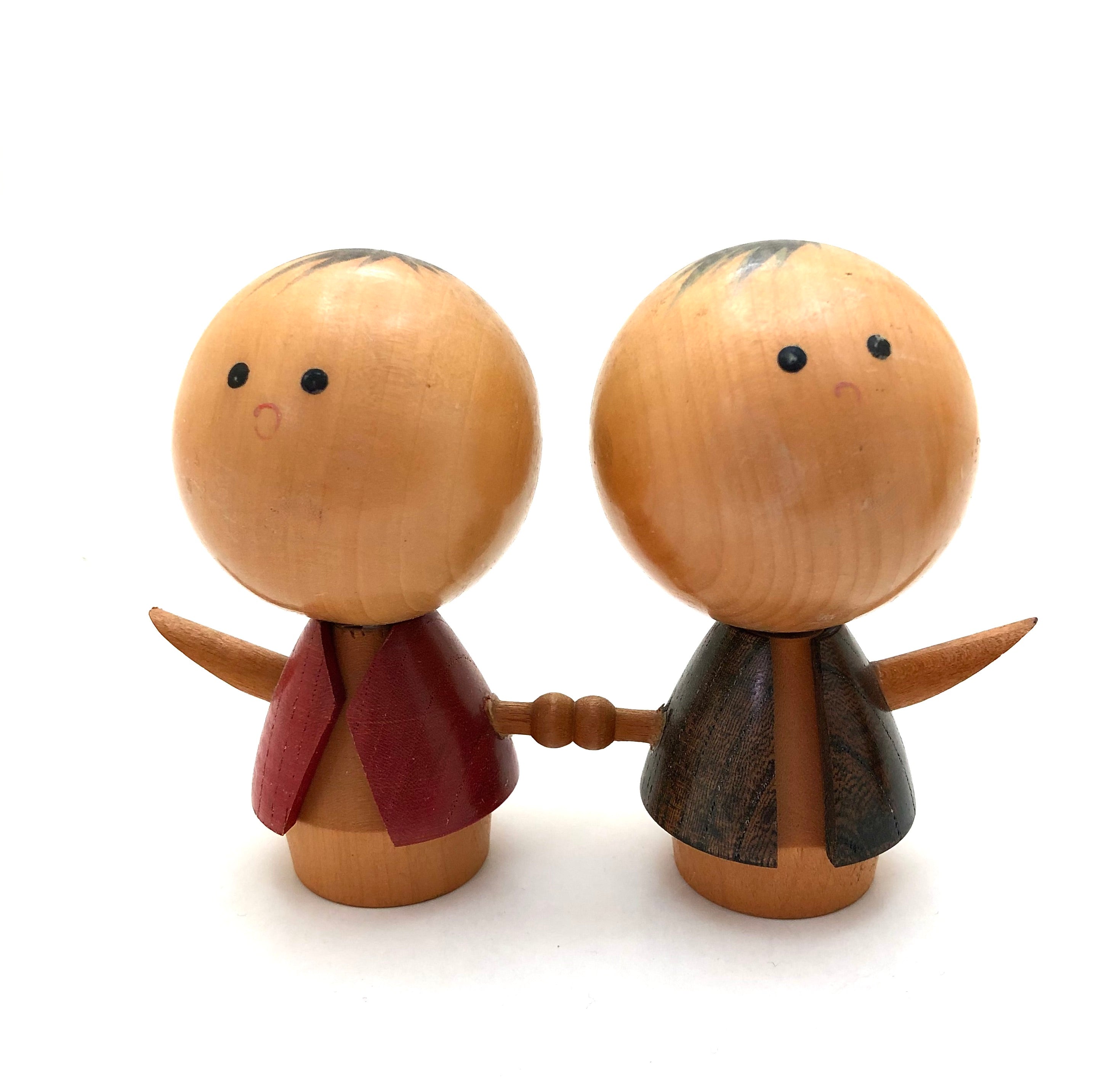
Artisan | Woodworker: Kato, Koumei
Biographical History:
As collectors, we felt it was most important to represent all Sosaku Kokeshi artists, whether or not each artist has a written account of his/her life. We show the diversity of cultural values and the creative work produced by a multitude of artists.
In researching old writings through articles and books that remain, it is evident that the Kokeshi Craftsperson not only created beautiful forms as toys, but also kept alive cultural values, customs, and fashion through the extensive representations of Kokeshi dolls. The beauty is in the doll and not the signatures, for most masters never signed their dolls. Later they named the dolls, but only when Westerners insisted on signatures because they did not know the artists, so the carvers began to sign their works, for the carvers wanted to promote sales to make a living, during the seasons that did not provide an environment to continue their otherwise daily work.
Collector's note – descriptive qualities, standard characteristics & ornamentation styles:
A predicament that the Japanese farm families found themselves in brought about the use of their children as workers in the fields in the 1920s to 1930s. Both males and females of all ages worked the agricultural fields, each having different chores. This grouping of Kokeshi has been a reoccurring theme in many forms of folk art which is children working in the fields carrying tools used to accomplish each task, and showing traditional elements of clothing and head covering. Each doll is lathe-turned with the jacket, (hiaori), made of a darker wood, and treated as separate elements, accentuated by the use of a different wood compared to the bodies. Their heads are beautifully rendered using sumi-e’ painting.




